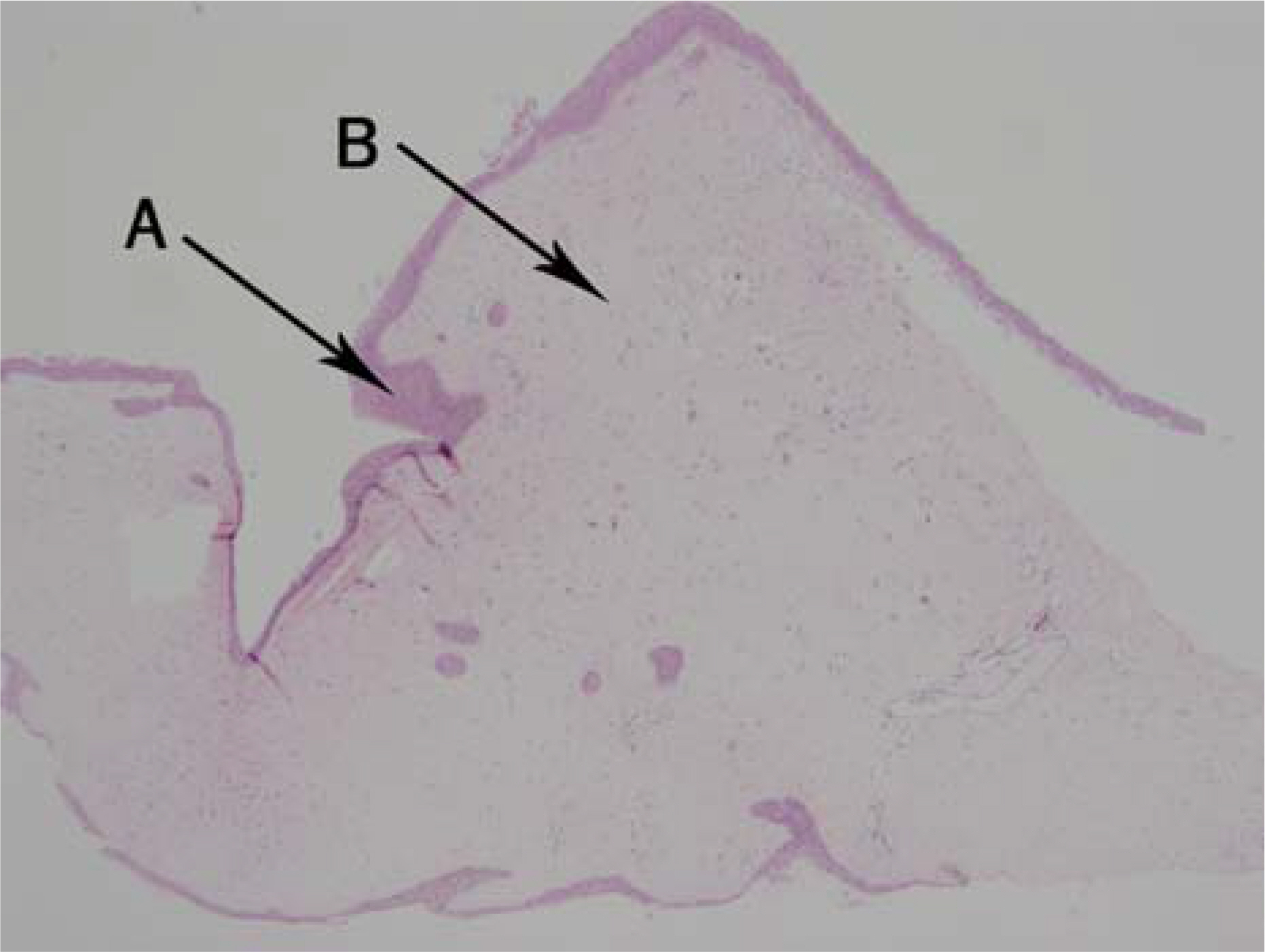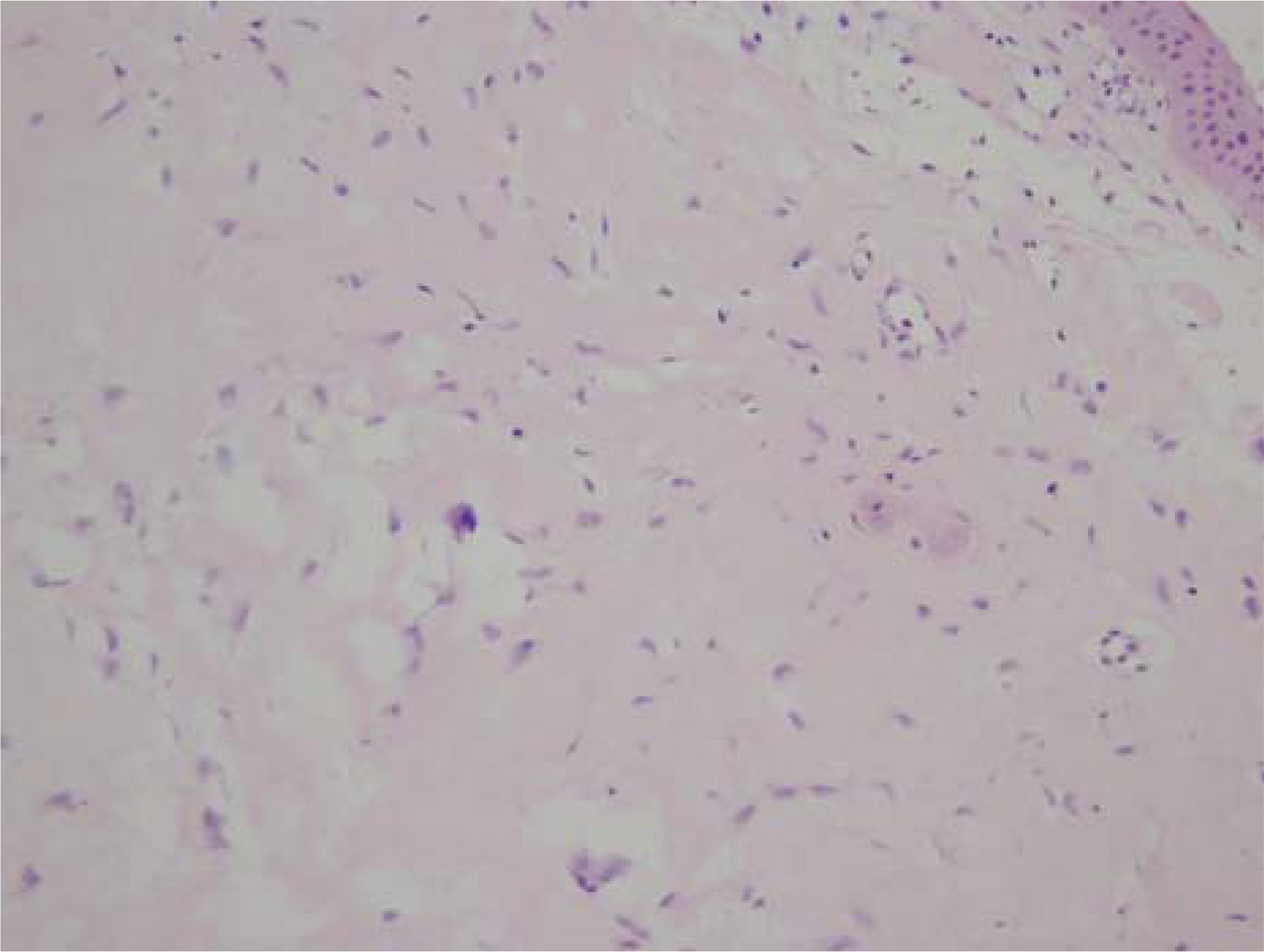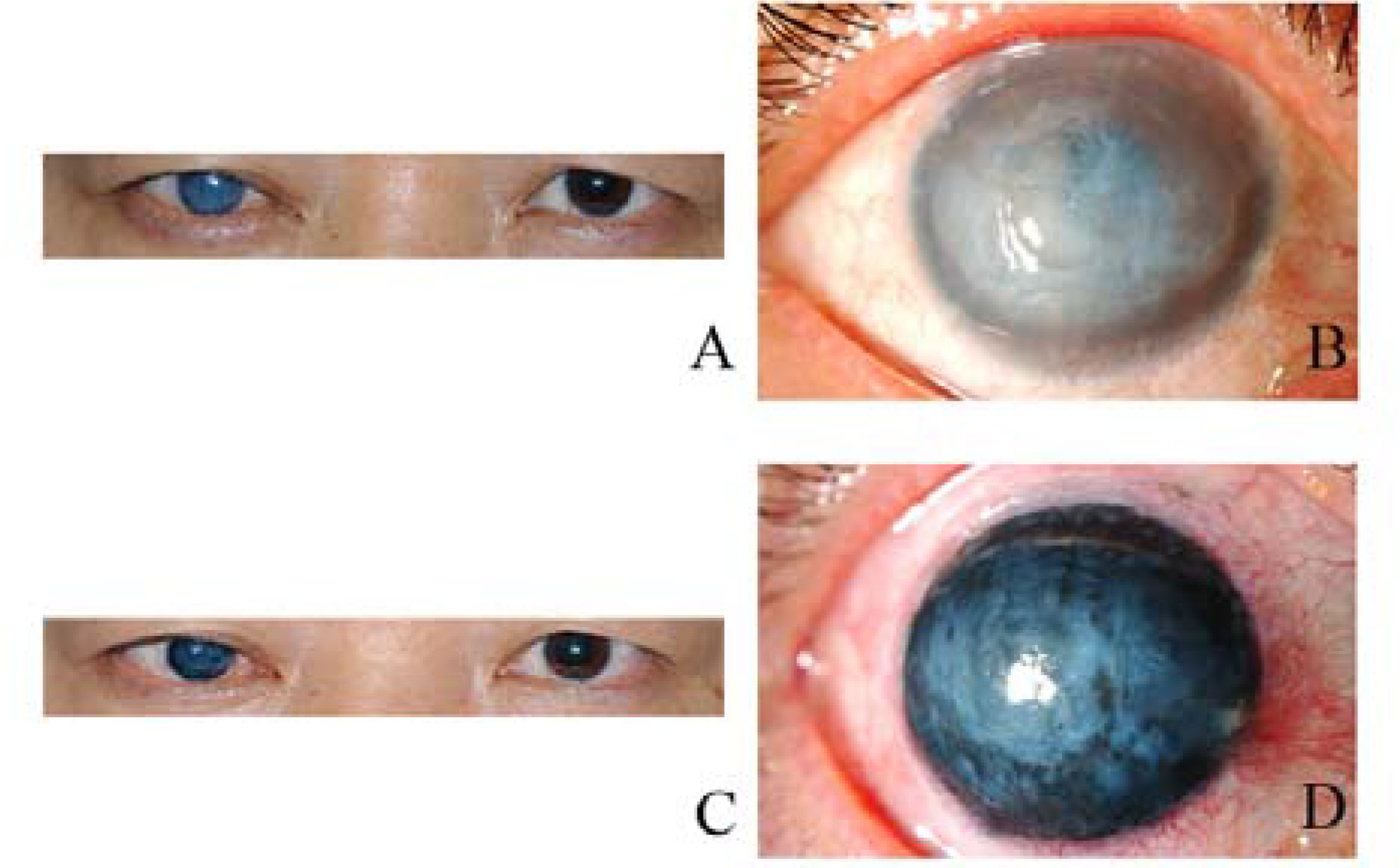J Korean Ophthalmol Soc.
2008 Mar;49(3):503-508. 10.3341/jkos.2008.49.3.503.
7 Cases of Combined Corneal Tattooing and Amniotic Membrane Transplantation in Bullous Keratopathy
- Affiliations
-
- 1Department of Ophthalmology, Seoul National University College of Medicine, Seoul Artificial Eye Center, Seoul National University Hospital Clinical Research Institute, Seoul, Korea.
- 2Department of Ophthalmology, Seoul National University Boramae Hospital, Seoul, Korea.
- 3Department of Ophthalmology, Seoul National University College of Medicine, Seoul National University Bundang Hospital, Seongnam, Korea.
- 4Seoul National University Hospital, Health Care System Gangnam Center, Healthcare Research Institute, Seoul, Korea.
- KMID: 2211326
- DOI: http://doi.org/10.3341/jkos.2008.49.3.503
Abstract
-
PURPOSE: We report on the clinical efficacy of the combined operation of corneal tattooing and amniotic membrane transplantation on the treatment of bullous keratopathy in patients with poor visual potentials.
CASE SUMMARY
We performed corneal tattooing and amniotic membrane transplantation in 7 eyes with bullous keratopathy. Postoperatively, we assessed the status of corneal reepithelialization, postoperative pain, and cosmetic effects. In all cases but one, corneal reepithelialization was successful without pain, and the corneal tattooing persisted throughout the follow-up period. In one case, a corneal epithelial defect developed, so we performed an additional amniotic membrane transplantation. After 2 weeks, the corneal epithelial defect healed and caused no further pain.
CONCLUSIONS
The combined operation of corneal tattooing and amniotic membrane transplantation is a good choice for the treatment of bullous keratopathy with regard to cosmetic problems, pain, and poor visual potential.
MeSH Terms
Figure
Cited by 2 articles
-
Three Cases of Corneal Tattooing for the Treatment of Traumatic Iris Defect
Sang Min Kwon, Hyun Chul Oh, Dong Joon Lee, Woo Chan Park
J Korean Ophthalmol Soc. 2009;50(1):151-159. doi: 10.3341/jkos.2009.50.1.151.Two Cases of Glare after Iridotomy for Phakic Intraocular Lens Implantation
Kyung-Hoon Shin, Keun Ho Kim, Ji-Won Kwon
J Korean Ophthalmol Soc. 2011;52(12):1537-1540. doi: 10.3341/jkos.2011.52.12.1537.
Reference
-
References
1. Liu GJ, Okisaka S, Mizukawa A, et al. Histopathological study of pseudophakic bullous keratopathy developing after anterior chamber of iris-supported intraocular lens implantation. Jpn J Ophthalmol. 1993; 37:414–25.2. Gasset AR, Kaufman HE. Bandage lenses in the treatment of bullous keratopathy. Am J Ophthalmol. 1971; 72:376–80.
Article3. Cormier G, Brunette I, Boisjoly HM, et al. Anterior stromal punctures for bullous keratopathy. Arch Ophthalmol. 1996; 114:654–8.
Article4. Thomann U, Niesen U, Schipper I. Successful phototherapeutic keratectomy for recurrent erosions in bullous keratopathy. J Refract Surg. 1996; 12:290–2.
Article5. Mejia LF, Santamaria JP, Acosta C. Symptomatic management of postoperative bullous keratopathy with nonpreserved human amniotic membrane. Cornea. 2002; 21:342–5.
Article6. Tang CK, Ahn HB, Park WC. The clinical effects of dyeamniotic membrane transplantation on bullous keratopathy. J Korean Ophthalmol Soc. 2003; 44:1741–7.7. Kim C, Han YK, Wee WR, et al. Cosmetic repair of corneal opacity by tattooing. J Korean Ophthalmol Soc. 2005; 46:1967–73.8. Ljubimov AV, Burgeson RE, Butkowski RJ, et al. Extra-cellular matrix alterations in human corneas with bullous keratopathy. Invest Ophthalmol Vis Sci. 1996; 37:997–1007.9. Maseruka H, Ataullah SM, Zardi L, et al. Tenascin-cytotactin (TN-C) variants in pseudophakic/aphakic bullous keratopathy corneas. Eye. 1998; 12:729–34.
Article10. Quantock AJ, Meek KM, Brittain P, et al. Alteration of the stromal architecture and depletion of keratan sulphate proteo-glycans in oedematous human corneas: histological, immuno-chemical and X-ray diffraction evidence. Tissue Cell. 1991; 23:593–606.
Article11. Hsu JK, Rubinfeld RS, Barry P, et al. Anterior stromal puncture. Immunohistochemical studies in human corneas. Arch Ophthalmol. 1993; 111:1057–63.12. Ljubimov AV, Saghizadeh M, Spirin KS, et al. Expression of tenascin-C splice variants in normal and bullous keratopathy human corneas. Invest Ophthalmol Vis Sci. 1998; 39:1135–42.13. Sridhar MS, Vemuganti GK, Bansal AK, et al. Anterior stromal puncture in bullous keratopathy: a clinicopathologic study. Cornea. 2001; 20:573–9.14. Mejia LF, Santamaria JP, Acosta C. Symptomatic management of postoperative bullous keratopathy with nonpreserved human amniotic membrane. Cornea. 2002; 21:342–5.
Article15. Espana EM, Grueterich M, Sandoval H, et al. Amniotic membrane transplantation for bullous keratopathy in eyes with poor visual potential. J Cataract Refract Surg. 2003; 29:279–84.
Article16. Thomann U, Meier-Gibbons F, Schipper I. Phototherapeutic keratectomy for bullous keratopathy. Br J Ophthalmol. 1995; 79:335–8.
Article17. Lin PY, Wu CC, Lee SM. Combined phototherapeutic keratectomy and therapeutic contact lens for recurrent erosions in bullous keratopathy. Br J Ophthalmol. 2001; 85:908–11.
Article18. Ji YS, Yoon KC. Combined Phototherapeutic keratectomy and amniotic membrane transplantation in the treatment of bullous keratopathy. J Korean Ophthalmol Soc. 2005; 46:616–22.19. Lee JE, Lee SU, Kim JH, et al. Corneal tattooing to mask the opacification after amniotic membrane grafting for corneal ulcer. J Korean Ophthalmol Soc. 2006; 47:1491–5.
- Full Text Links
- Actions
-
Cited
- CITED
-
- Close
- Share
- Similar articles
-
- The Clinical Effects of Dye-Amniotic Membrane Transplantation on Bullous Keratopathy
- Application of Amniotic Membrane Graft for the Treatment of Bullous Keratopathy Combined with Intractable Glaucoma
- Cosmetic Repair of Band Keratopathy Using Stained Amniotic Membrane
- Corneal Tattooing to Mask the Opacification after Amniotic Membrane Grafting for Corneal Ulcer
- A Novel Application of Amniotic Membrane in Patients with Bullous Keratopathy





